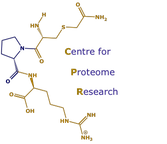Recent developments
12 03, 11
We’re the first lab in the UK (and possible Europe) to implement HDMSE on our Waters Synapt G2. We like MSE - a strategy that doesn’t commit the workflow to data dependent scanning by collecting all product ions from the complete cluster of precursors (the recent paper from the Mann group in JPR has highlighted just how many ions are missed in data dependent scanning). The MSE workflow suffers of course form the onslaught of ions of different abundances and intensities, and the unbundling off products from precursors is a major analytical challenge. First solution; invoke ion mobility as a means of teasing apart the precursor cluster more, according to cross-sectional area. This is equivalent to an orthogonal 60 millisecond separation sitting post-chromatography and pre-fragmentation.
The data that comes from this setup has an added ion mobility dimension, and the Apex algorithms must now cope with the mobility dimension. All doable, but with a standard PC, no longer in realistic timeframes. The Waters solution is to provide a PC that runs in 64bit, has 12GB of RAM but most importantly, has subverted a graphic processing unit (GPU) for the heavy duty calculations. This beast works with regular MSE data sets as well, but comes into its own with HDMSE.
The data that comes from this setup has an added ion mobility dimension, and the Apex algorithms must now cope with the mobility dimension. All doable, but with a standard PC, no longer in realistic timeframes. The Waters solution is to provide a PC that runs in 64bit, has 12GB of RAM but most importantly, has subverted a graphic processing unit (GPU) for the heavy duty calculations. This beast works with regular MSE data sets as well, but comes into its own with HDMSE.
